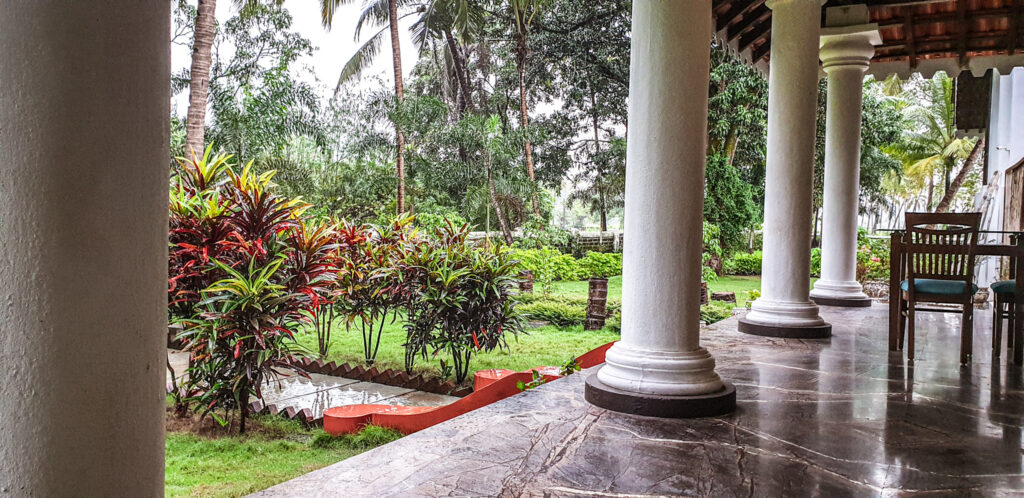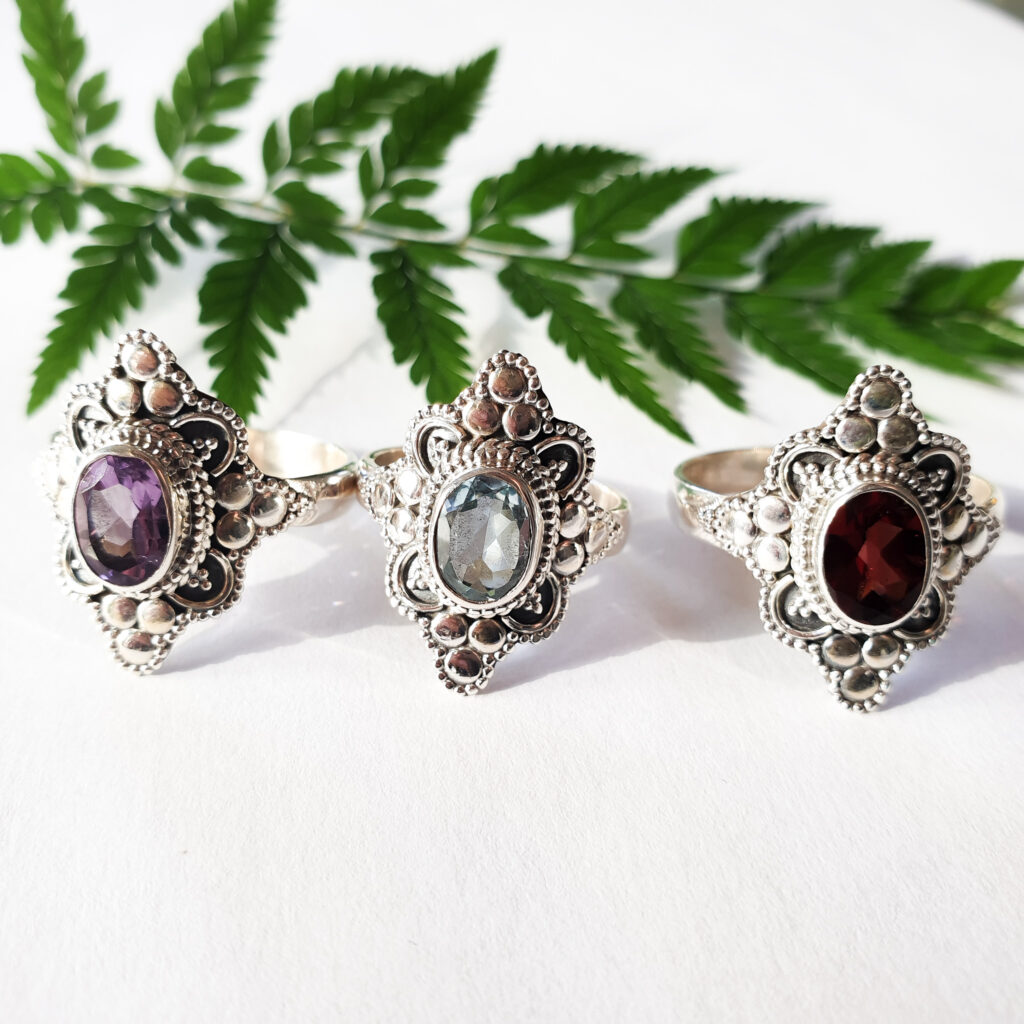Goa is located on the western coast of India. It is a small state known for its beautiful beaches and interesting culture. It was once a Portuguese colony for over 450 years before it became a part of independent India in 1961. This rich history has left behind a unique blend of Indian and Portuguese influences, making Goa a melting pot of cultures. In this article I’m going to explore the fascinating history and culture of Goa. I also focus on the differences between North and South Goa. The article provides a list of best historical and natural places to visit in Goa, north and south. And I highlight interesting cultural practices that visitors can experience firsthand.
Table of Contents
History of Goa
Goa has a long and diverse history dating back to ancient times. It was ruled by various dynasties, including the Mauryas, Satavahanas, and Chalukyas. The most significant impact on Goa’s culture came during the colonial period when it was under Portuguese rule.
The Portuguese arrived in 1510 in Goa. They established their colony and lasted until 1961. During this time they introduced their language, religion, and architecture to the region. Many Goans today have Portuguese surnames and continue to speak a mix of Konkani and Portuguese languages.
After India gained independence in 1947, Goa remained under Portuguese rule for another decade until it was annexed by the Indian government in 1961. This event is celebrated as “Liberation Day” in Goa is a significant part of its history.

Old Goa
Old Goa was founded by the Bijapur Sultanate in the early 16th century. In 1510 the city was captured by the Portuguese. It was the capital of Portuguese India for nearly 150 years before it was abandoned in the 18th century due to the spread of epidemics. The structures that remain today are a mix of both Indian and Portuguese architecture. This mix makes them unique to any other form of architecture you may have come across in the country. Old Goa is now a UNESCO World Heritage site, attracting tourists from all over the world.
Monumental highlights in Old Goa
One of the most iconic structures in Old Goa is the Basilica of Bom Jesus, which was built in the 16th century. It is famous for housing the mortal remains of St. Francis Xavier. He played a significant role in the spread of Catholicism in India. The basilica has stunning Baroque architecture and mesmerising frescoes that are sure to leave you spellbound.
A little further down the road is another magnificent building, the Se Cathedral, considered to be one of the largest churches in Asia. With Portuguese influence evident in its architecture, this beautiful cathedral has a grand nave that is 76m long and 55m wide. The gilded altars and floral motifs make it a sight to behold.
The Church of Our Lady of the Immaculate Conception is another architectural masterpiece in Old Goa. The church’s strikingly white façade is an iconic landmark in the city. The church is situated on a hill that overlooks the town and is known for the picturesque views it offers. The church’s design is a mix of different styles that include the Gothic, Baroque, and Manueline styles of architecture.
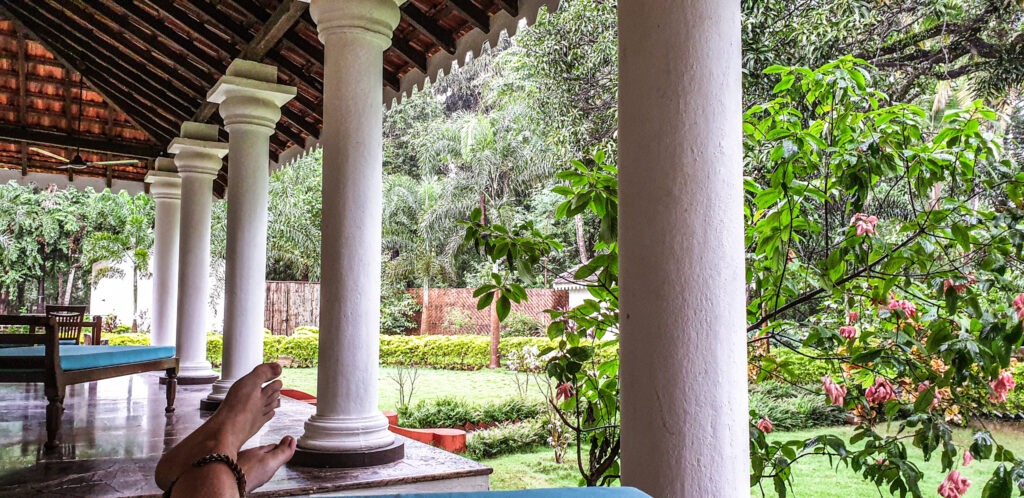
Museum of Christian Art
The Museum of Christian Art is located in the Convent of Santa Monica in Old Goa. They have a unique collection of sculptures, paintings, and artifacts that highlight the evolution and influence of Christianity in the region. The museum showcases an eclectic mix of art forms across several mediums such as ivory, metal, wood, and textiles, which make it one of the finest collections of Christian art in the world.
One of the most significant exhibits at the museum is the Basilica of Bom Jesus Treasure, which includes a splendid collection of ecclesiastical objects, liturgical vestments, and rare books. The museum also houses rare antiquities such as the Portuguese-style brass candelabras used in the churches of Goa and Mozambique. The museum’s library is a great chronicle of the region’s Christian history, consisting of valuable books and manuscripts that are preserved with great care.
The Museum of Christian Art also has a unique collection of furniture and liturgical objects, including a beautifully carved sanctuary chair and a sixteenth-century altar-piece. The museum’s collection of paintings is particularly impressive, featuring works by renowned artists such as Garcia Fernandez, Mestre Baptista, and Antonio Francisco Xavier.
Fort Aguada
The magnificent Fort Aguada in Goa is a popular tourist destination for those who are interested in exploring the history and the bewitching architecture of this grand structure. The largest and the most well-preserved fort in Goa. Fort Aguada is a marvel of engineering and a testament to the architectural brilliance of the Portuguese. Along with its stunning beach, the fort attracts tourists from all over the world.
Located near the Mandovi River in Sinquerim, North Goa, Fort Aguada is a 17th-century-built fort in the Portuguese architectural style. The fort was constructed in 1612 to provide defence against the Dutch and the Marathas. It was built with red laterite stone and was named after the water supply to the fort. The structure was named after a freshwater spring named “Aguada“, which means “watering place” in Portuguese.
The fort is spread across a massive area and houses a lighthouse that is still in use today. The structure is built on a hill that towers over the magnificent Candolim beach. Visitors to the fort can look forward to stunning panoramic views of the Arabian Sea from the upper fort, including the nearby Sinquerim Beach and the historic Reis Magos Fort.
The fort was strategically designed to house 79 cannons to protect the coastline. The lower tier cannons are still visible to visitors to the fort today, along with secret tunnels leading to the sea. These tunnels were used by Portuguese soldiers to escape during attacks.
Fort Aguada is said to have been one of the most pivotal forts during the Portuguese rule of Goa, and numerous wars against the Dutch and the Marathas have been fought here. The fort was also used as a prison, and the remains of cells can still be seen within its walls.
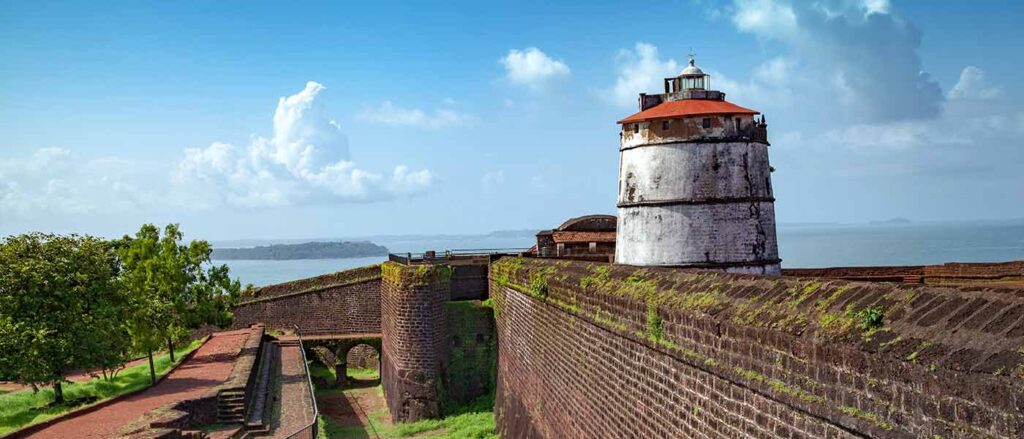
Spice Plantations
A visit to one of Goa’s spice plantations is a must for food and nature lovers. These plantations offer guided tours where visitors can learn about various spices and even participate in cooking demonstrations using fresh herbs and spices. To visit a spice plantation click this link to visit the website of the Government of Goa.
Dudhsagar Waterfalls
Increasing the beauty of India’s second-highest waterfall, Dudhsagar has an enchanting story to tell. According to the mythical tales of the locals, the waterfall got its name as ‘Sea of Milk’. They believe the heavenly cows called Kamadhenu have descended at the site, washing their udders clean before they continued their journey. The myth makes the place alluring and captivating.
The Dudhsagar waterfall trek is an experience you cannot miss on your visit to Goa. The 13 km trek takes you through dense forests and rugged terrains leading to the base of the waterfall. You’ll also get to cross many streams, which makes the trek more adventurous. The mesmerizing view of the falls from above once you reach the top is worth every step you take in the trek.
Apart from the trek to the falls, there are other fun activities you can do near Dudhsagar. You can indulge in adventure sports like rock climbing, watersports, zip-lining, river rafting, swimming and many more. You can also visit the Bhagwan Mahaveer Sanctuary, Dudhsagar railroad bridge, and Mollem National Park. Also, don’t forget to indulge in some delicious Goan cuisine from the shacks near the falls.
The best time to visit the Dudhsagar Waterfalls is during the monsoon season from June to September. During this time, you can witness the waterfall in its full glory, with a high torrent of milky-white water that falls from an enormous height. You can avoid the crowds and have a serene and peaceful experience by visiting early in the mornings or on weekdays.
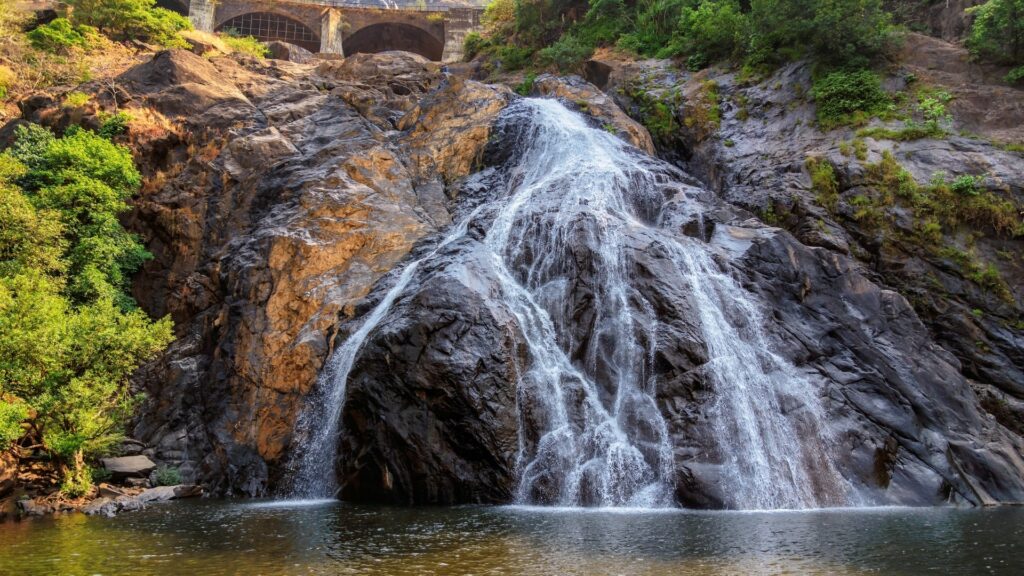
Anjuna Flea Market
The famous Anjuna Flea Market, held every Wednesday, is a popular spot for tourists to shop for souvenirs and local handicrafts. It also offers a lively atmosphere with live music and street food stalls.
Chapora Fort
Chapora Fort is located in the north of Goa and was built by the Portuguese in 1617 to safeguard their territory from the Maratha rulers. The fort has a rich history as it has witnessed several wars and battles fought over the years. Today, only ruins of the fort remain, but it still attracts a large number of visitors every year. As you enter the fort, you will be greeted with a magnificent view of the river and the surrounding greenery. The view is simply breathtaking, and it’s one of the main attractions of visiting Chapora Fort.
The fort’s architecture is notable for its robustness and simplicity in design. The walls of the fort are made of red laterite stone, and its lofty turrets create an imposing sight. There are two entrances to the fort, a main entrance, and one that leads up to the hilltop. The walls are still decorated with medieval cannons, reminders of the fort’s past role in safeguarding the region from invaders.
One of the fascinating aspects of Chapora Fort is that it has been featured in Bollywood movies such as Dil Chahta Hai, starring Aamir Khan, and Haseena Maan Jayegi, starring Govinda. Those movies have immortalized Chapora Fort in the minds of many travellers, especially Bollywood fans. No matter your reason for visiting, Chapora Fort remains a breathtaking and engaging destination.
Divar Island
Divar Island, nestled in the Mandovi river, is a hidden gem of Goa. This tiny island may be lesser-known, but once you set foot on it, there’s no going back. The island’s serene ambiance and untouched natural beauty make it a paradise for explorers and nature enthusiasts. From lush greenery to ancient churches and temples, there is something for everyone. If you’re looking to discover a different side of Goa, make sure you add Divar Island to your itinerary.
History and architecture
Divar Island is the perfect destination for history lovers. This picturesque island has a rich history that’s reflected in its colonial-era architecture. The island is home to some stunning Catholic churches, including the Our Lady of Compassion Church and the Church of Our Lady of Piety. These churches date back to the 16th century and are a unique blend of European and Indian architectural styles. The Hindu temple dedicated to Lord Shiva is also a must-visit. The simplicity and beauty of this temple are sure to leave you mesmerized.
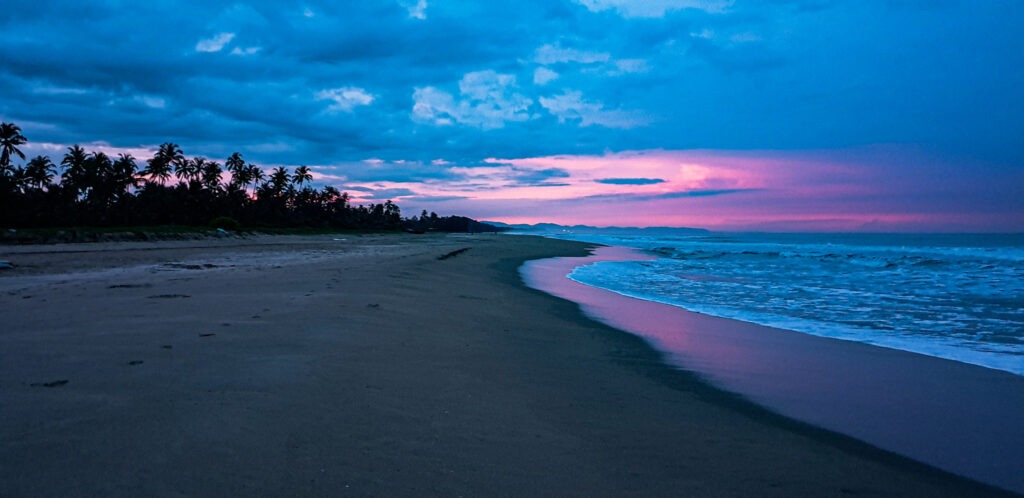
Stunning views
Divar Island is surrounded by the Mandovi river, which makes it a great spot for panoramic views. It’s the kind that just take your breath away. The island is filled with viewpoints that offer stunning vistas of the river. If you’re looking for a quiet spot to relax and soak in the scenery, the ferry ride from Old Goa to the island is a great start. As you cross the river, you’ll see the colourful houses, lush greenery, and serene mangrove forests of the island.
Nature walking and bird watching
Divar Island is a haven for nature enthusiasts. The island’s serene environment and abundance of flora and fauna make it a perfect destination for nature walks and bird watching. The island’s countryside is covered with cashew and coconut trees, and the fields are dotted with seasonal crops. The Salim Ali Bird Sanctuary is also located close to the island, offering bird lovers a chance to spot some exotic birds.
Cultural activities and festivals
Divar Island has a rich cultural and musical heritage that’s on full display during festivals like Bonderam, Sao Jao, and the Feast of Our Lady of Piety. Bonderam is one of the most famous festivals celebrated in Divar Island. It’s a colourful event that revolves around a mock battle fought between two groups. The Sao Jao festival is a celebration of the monsoon season, where young men jump into wells to retrieve bottles of Feni: a local alcoholic drink made from cashew fruits.
Adventure sports
Divar Island is an adventure enthusiast’s paradise. Kayaking, boating, and paddleboarding on the Mandovi river are some of the activities that you can enjoy. You can also head to the island’s famous tunnel (a navigable underground channel that is lit with torches) for a unique exploration experience.
Cotigao Wildlife Sanctuary
Goa is known for its beautiful beaches and vibrant nightlife. it is also home to one of the most biodiverse forests in the country. The Cotigao Wildlife Sanctuary. Covering an area of 86 square kilometres, this sanctuary is located in Canacona Taluka of South Goa. If you’re looking to spend some time in nature, away from the usual bustle of city life, then Cotigao Wildlife Sanctuary is definitely worth a visit.
Birds and animals
The Cotigao Wildlife Sanctuary is a perfect destination for nature lovers and adventure enthusiasts. There are several trekking routes, which will take you deep into the forest. You can spot different species of animals like the Indian Bison, Flying Squirrels, Slender Loris, and several species of snakes and frogs. The sanctuary is also home to many species of birds. The chirping of birds and the rustling of leaves, all around you, is sure to relieve you of all your stress and worries.
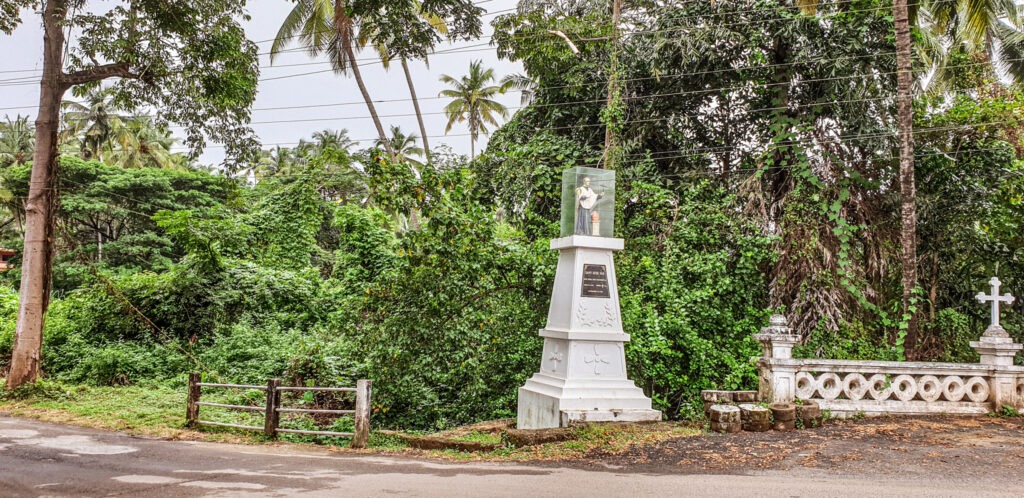
Medicinal plants
If that’s not enough, the sanctuary also has of a vast array of medicinal plants. The locals have been using them for many centuries for their medicinal properties. The forest officials at the sanctuary conduct nature walks, where you can learn about different plant species and their uses. It’s a great opportunity to learn about the traditional knowledge of the indigenous people of this region.
The cottages and tents inside the sanctuary are available for tourists as well. You can spend a night in the midst of nature, with no disturbance from the outside world. The inside view of the forest from your accommodation is just amazing. You can simply sit back and relax, enjoying the silence of the forest and the sound of insects.
History
Apart from the rich flora and fauna, the Cotigao Wildlife Sanctuary also has a historical significance. According to the legend, the sanctuary was once ruled by the local King Canacona. Archaeological evidence suggests that the sanctuary has been inhabited by humans since prehistoric times. A visit to the sanctuary is a great opportunity to learn about the local history and culture.
Goa Chitra Museum
The Goa Chitra Museum is a unique museum that showcases Goan heritage through its extensive collection of artifacts and tools used in traditional farming and fishing. It is a great place to learn about the cultural practices of Goa. Victor Hugo Gomes, a Goan entrepreneur, and architecture enthusiast started the Goa Chitra Museum. The museum opened its doors to the public in 2010. The museum is housed in a restored 400-year-old Portuguese mansion, which in itself is a marvel of architecture and design. From the moment you step inside, you are transported to a different era, an era of simplicity, hard work, and creativity.
Collection
Goa Chitra Museum has an impressive collection of over 4,000 artifacts, tools, and objects that showcase the traditional agrarian and artisanal way of life in Goa. The exhibits are spread across 12,000 sq. m of space and organized into categories such as agriculture, fishing, pottery, weaving, carpentry, and more. What sets this museum apart is not just the depth and breadth of the collection but also the attention to detail that has gone into preserving and presenting each artifact.
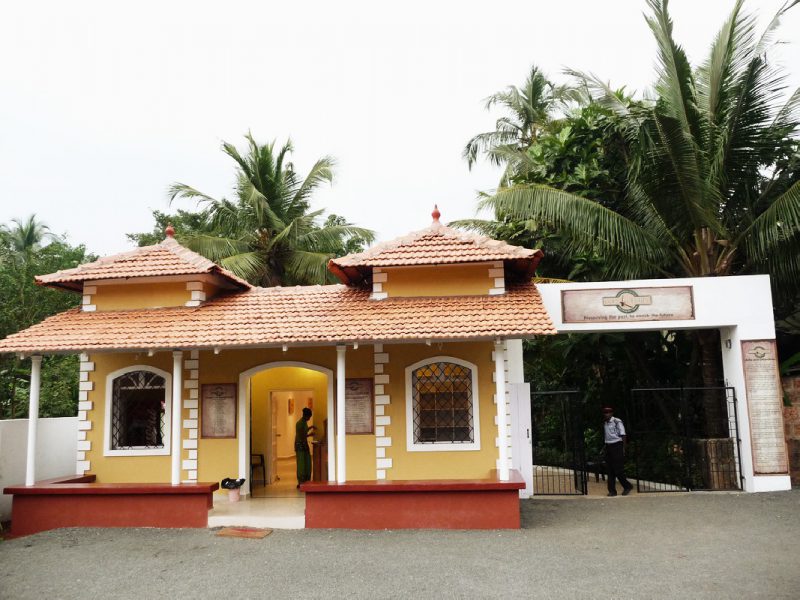
Guided tours
The museum offers guided tours, which are highly recommended if you want to learn about the history and significance of each artifact. The guides are well-trained and passionate about the museum’s mission. They like to preserve Goa’s cultural identity and educate visitors about the state’s heritage. The tour takes you through the various exhibits, and the guide explains the significance, history, and usage of each artifact, making the experience informative, engaging, and memorable.
Research centre
What makes Goa Chitra Museum even more special is the fact that it is not just a museum but also an active centre for research and documentation of traditional farming techniques, rural crafts, and sustainable livelihoods. The museum collaborates with local artisans, farmers, and NGOs to promote and preserve traditional knowledge and practices that are in danger of being lost in today’s fast-paced world. The museum also hosts workshops, seminars, and exhibitions that bring together experts and enthusiasts to share knowledge and exchange ideas.
Tambdi Surla Temple
If you’re someone who loves to explore historical sites and ancient architecture, Tambdi Surla Temple is a must-visit destination. This temple is located in the dense forests of Goa. It believed to be the only surviving temple of the Kadamba Dynasty. Dating back to the 12th century, the temple is nestled amidst the lush green Western Ghats and is a hidden gem that’s worth discovering.
To reach Tambdi Surla Temple, you need to take a scenic drive through the dense forests of the Bhagwan Mahaveer Wildlife Sanctuary. The temple is located near the Goa-Karnataka border and is surrounded by a picturesque landscape that’s sure to leave you spellbound. The temple’s architecture is a testament to the skill and precision of the craftsmen of the Kadamba Dynasty. The temple is made of black basalt and is dedicated to Lord Shiva. The intricate carvings and sculptures on the temple walls and pillars are a sight to behold, and you can spend hours studying them.
Temple architecture
One of the most fascinating aspects of Tambdi Surla Temple’s architecture is its sophisticated ceiling. The main sanctum of the temple is covered by a beautifully carved stone ceiling that depicts various scenes from Hindu mythology. The carvings are so intricate that they seem to come alive. The ceiling is supported by four pillars, which are also decorated with beautiful carvings. It’s fascinating to see how the craftsmen of the Kadamba Dynasty were able to create such intricate designs with limited tools and technology.
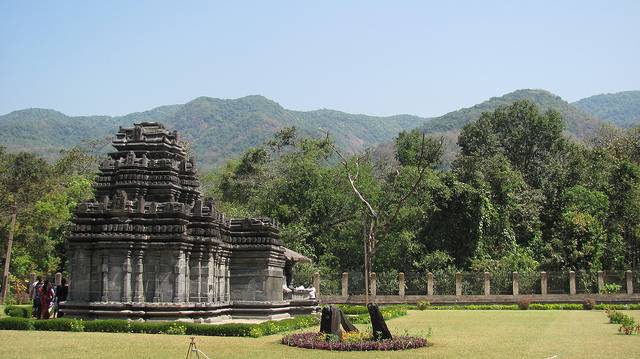
Natural environment
Another interesting aspect of Tambdi Surla Temple is its location. The temple is built on the banks of the Tambdi Surla river, which is a tributary of the Mandovi river. The surrounding forests were once believed to be infested by tigers, and the temple provided a safe haven for travellers and pilgrims. The temple’s location amidst the dense forests adds to its mystical charm and makes it a popular destination for nature lovers as well.
Protected monument
The temple’s architecture and location have both contributed to its survival over the years. Despite being over 800 years old, the temple has been well-maintained and is in remarkable condition. The Archaeological Survey of India has declared the temple a protected monument and has taken steps to preserve it for future generations. Visitors to the temple are required to remove their shoes before entering, as is customary in Hindu temples.
Arpora Saturday Night Market
For a vibrant and lively experience, head to the Arpora Saturday Night Market. This weekly market is a hub for food, shopping, and live music, making it a popular spot for tourists and locals alike.
Ancestral Goa
Ancestral Goa is situated in the tiny village of Loutolim in South Goa It’s a much lesser known attraction that promises to take you on a journey through time. To the days of pre-colonial Goa. As soon as you step through the entrance gates, you will be transported to another time. The life-size statue of Sant Mirabai welcomes you, surrounded by artistic carvings and grand halls. The premise is spread over a vast area, encompassing ancient temples, artificial ponds, and traditional Goan houses. From the recreated Goan village to ancient temple architecture, Ancestral Goa will take you through an immersive journey into Goa’s past.
Goan tradition
The people of Goa take great pride in their customs and traditions, and Ancestral Goa proudly showcases them in their daily shows. The resident troupe of artists perform cultural dances, music and puppet shows daily, and they offer an excellent opportunity to witness the local craftsmanship and traditional attire firsthand.
Ancestral Goa possesses its own indoor museum, housing a variety of artifacts and artwork that date back to ancient times. With entry to the museum included in your ticket price, you can take your time exploring the stunning architecture, literature, and history of Goa. The museum also exhibits paintings by local artists, sculptures made from natural materials and antique furniture used by Goan aristocrats.
Try authentic flavours
No visit to Goa would be complete without trying the local cuisine, and Ancestral Goa’s restaurant has got you covered. Offering authentic Goan fish curry-rice and other delicacies in a scenic and serene setting, the dining experience here is truly a treat. They also have a bar where you can sample the famous Feni, a Goan alcoholic beverage made from cashew or coconut.
Chapel of St. Catherine
The Chapel of St. Catherine was built in 1510 by the Portuguese as a church and a convent. It was also the first building in Goa to be dedicated to St. Catherine of Alexandria, a fourth-century saint and martyr. The Chapel of St. Catherine is located on the banks of the River Mandovi, in the Velha Goa or Old Goa region, which was the capital of Portuguese India until the mid-18th century. The chapel was built in the style of the Manueline architecture, with intricate designs and artistic touches that were characteristic of the Portuguese style of the 16th century.
The architecture of the chapel
The Chapel of St. Catherine is an excellent example of the unique blend of Indian, Portuguese, and modern architecture. The chapel’s façade is embellished with Gothic-style motifs, while the dome is decorated with typical Indian-style floral designs. The intricately carved wooden altar, which is in a Baroque style, is the chapel’s centrepiece. Another unique feature of the chapel is the wooden screen that divides the main nave from the side aisles, which came from the older church. These artistic touches reflect the cultural and religious influences on the architecture of the chapel.
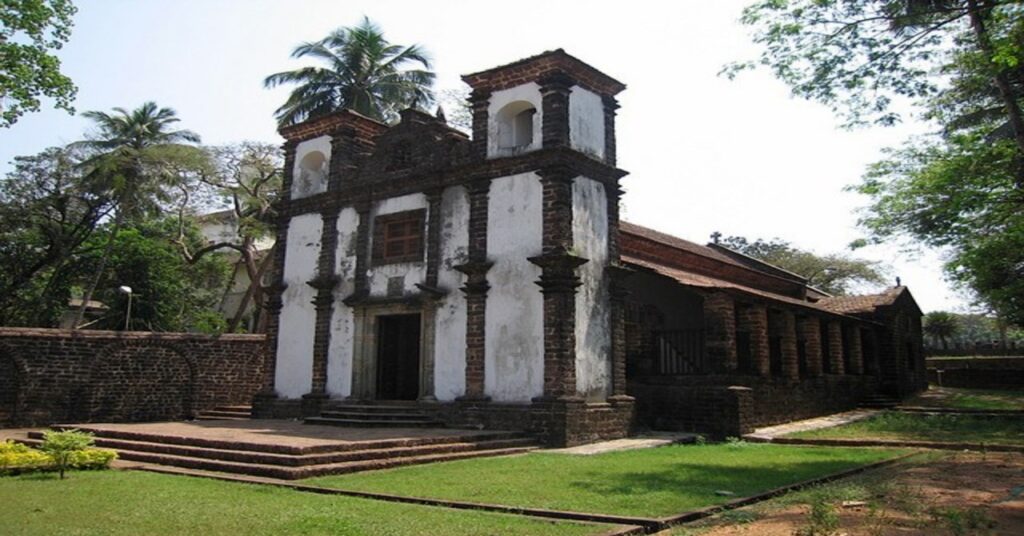
The interior of the chapel
The interior of the Chapel of St. Catherine is just as majestic as its exterior. The chapel has a single nave, which is lined with beautiful paintings, ivory carvings, and statues of saints. The Chapel also contains the tomb of St. Francis Xavier, one of the patron saints of Goa, located in the transept area. The tomb is made of silver and was designed by Italian artist Giovanni Battista Foggini. The tomb’s intricate designs and artistic touches make it one of the most breathtaking parts of the chapel.
The restoration of the chapel
The Chapel of St. Catherine has undergone several restoration projects over the years, to preserve its historical and architectural significance. The recent restoration project took place in 2015, where the chapel’s façade was renovated to its former glory. The restoration project aimed to bring back the chapel’s original architectural beauty with the original texture of the paint. The restoration project also aimed to preserve the chapel’s cultural and historical importance, attracting tourists and Goans alike to visit this magnificent monument and pay respect to its legacy.
South Goa Beaches
South Goa is a stunning coastal region filled with pristine beaches that offer visitors a picturesque escape from the hustle and bustle of city life. Known for its scenic beauty, rich cultural heritage, and vibrant nightlife, South Goa is a popular vacation spot in India. In particular, South Goa beaches are famous for their sweeping vistas, turquoise waters, and ancient historical sites. From quiet, secluded coves to bustling beaches with plenty of activities, South Goa has a beach to suit every type of traveller.
Colva Beach
Located in south Goa, Colva Beach is famous for its white sandy coastline that stretches for miles. Along with being an ideal place for sunbathing, swimming, and relaxing, Colva Beach is steeped in history. This beach was once the hotspot for trading activities, and there were many ancient buildings around this area that are worth exploring. One must-visit place near Colva is the Our Lady of Mercy Church, which dates back to the 16th century.
Benaulim Beach
Benaulim Beach is one of the most beautiful beaches in South Goa. The beach boasts of a long stretch of golden sand and palm trees that sway in the salty breeze. The quiet and serene ambiance of this beach attracts visitors who want to relax and rejuvenate. If you’re lucky, you might spot some dolphins in the early morning. Also, the famous St. John -The Baptist Church, built-in 1956, is located close to the Benaulim Beach.
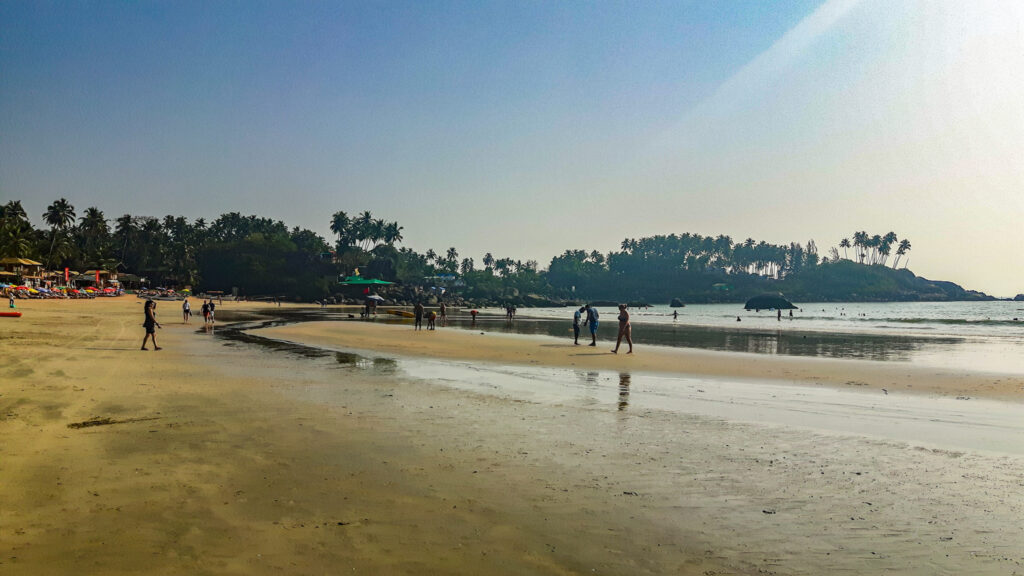
Palolem Beach
Palolem Beach is something straight out of a postcard. With its crescent-shaped coastline of golden sand and turquoise water, Palolem is the perfect spot to experience the Goan way of life. You can have some fun-filled time kayaking or indulge in a yoga session in a peaceful setting. When the sun goes down, the beach comes alive with its endless nightlife options, dance parties on the beach, live music, etc.
Majorda Beach
Majorda Beach, a hot spot for adventure enthusiasts, is located in the southern part of Goa. Here, you can indulge in a range of water sports like jet skiing, parasailing, and banana boat rides. You can also visit the famous Majorda Church, one of Goa’s oldest churches, built in the 16th century.
Butterfly Beach
The lesser-known Butterfly Beach is a hidden gem in South Goa. The beach is set in a cove and can only be reached by boat, which adds to its charm. The beach is known for being the breeding ground for the beautiful butterfly species. If you’re lucky, you might find yourself in the midst of thousands of butterflies. It’s a great spot for picnics and barbeques and just taking in nature’s beauty.

Cultural Differences between North and South Goa
Travel Guide to Goa would be incomplete without explaining the distinctions between North and South Goa.. While Goa is a small state, it can be divided into two distinct regions: North and South. These regions have their unique cultural identities, influenced by the people who inhabited them historically. Let’s explore some of the main differences between these two regions.
Cuisine
The cuisine of North Goa is influenced by its Portuguese heritage. It includes dishes such as pork vindaloo, chicken cafreal, and bebincas (a type of dessert). In contrast, South Goa’s cuisine is more traditional and reflects the region’s Hindu roots. Some famous dishes from this region include fish curry rice, sorpotel and sanna.
Religion
Religion also plays a significant role in the cultural differences between North and South Goa. While North Goa has a predominantly Catholic population due to its Portuguese influence, South Goa is primarily Hindu. This difference is evident in the number of churches and temples found in each region.
Festivals
Both North and South Goa have their unique festivals that reflect their cultural influences. In North Goa the biggest celebrations are for Christmas and Carnival. While in South Goa, festivals such as Ganesh Chaturthi and Diwali are widely celebrated.
Architecture
The architecture in North Goa is marked by its Portuguese colonial buildings and churches. South Goa has a more traditional Goan style with influences from Hindu and Islamic architecture. This contrast can be seen in the different styles of homes, churches, and other prominent buildings in both regions.
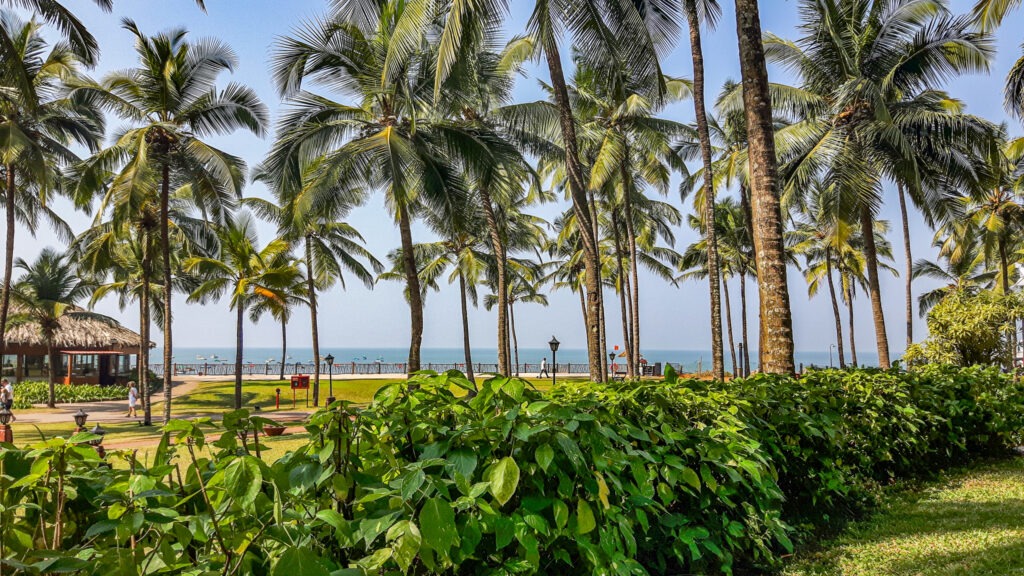
Places to visit in India
Explore the rich tapestry of India with our comprehensive travel guide! Discover valuable tips, top destinations, and useful links to other India-related articles. Consider a visit to the enchanting City of Lakes, Udaipur, or indulge in a shopping spree in Jaipur. Or discover the majestic palaces of Rajasthan. Marvel at the colonial architecture of Kochi in Kerala or explore historical temples, palaces, and ruins in Hampi. Let India’s wonders captivate you!
Cultural travel in India
India is a land of diverse culture and religion. With each faith leaving its mark on the land’s ancient history. Immerse yourself in the Indian culture and Hinduism with our beginner’s guide, which covers customs, etiquette, and key Hindu gods. Or learn more about Jainism, one of the lesser-known religions in India.
When travelling in India check out if you can attend a fascinating festival or celebration. They have many. Some of are national festivals other are regional. Travelling is one of the most rewarding experiences one can have, but it can be an even more enriching experience if you dive deep into the cultural aspects of your destination. Cultural immersion is a popular concept among travellers, and it is becoming increasingly popular as people seek more authentic experiences.
Sustainable travel
As the world shifts towards sustainability, more and more people are exploring ways to take their travels further without leaving an overwhelming impact on the environment. Learn more about sustainable tourism, and explore the world while protecting it. Or read more about specific sustainable travel tips when travelling in India: How to get around in India as an eco-conscious tourist
